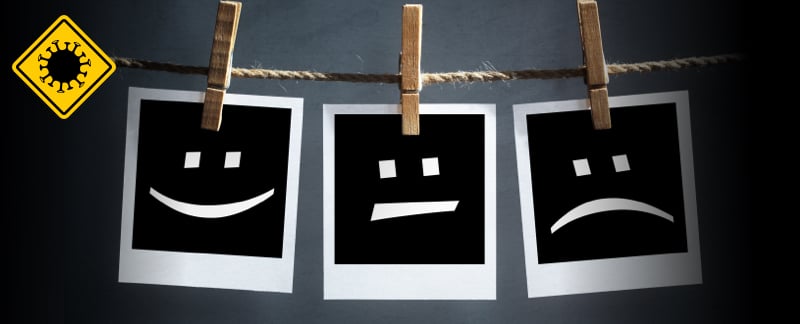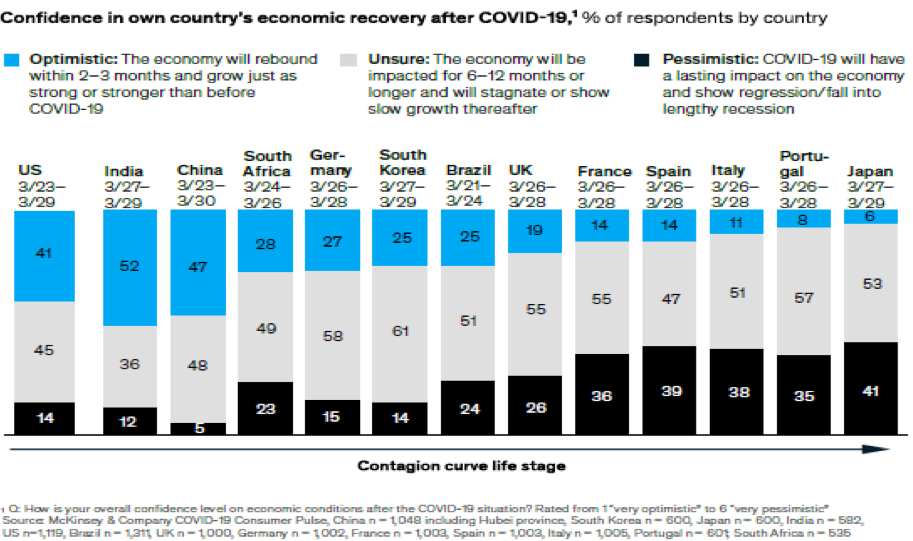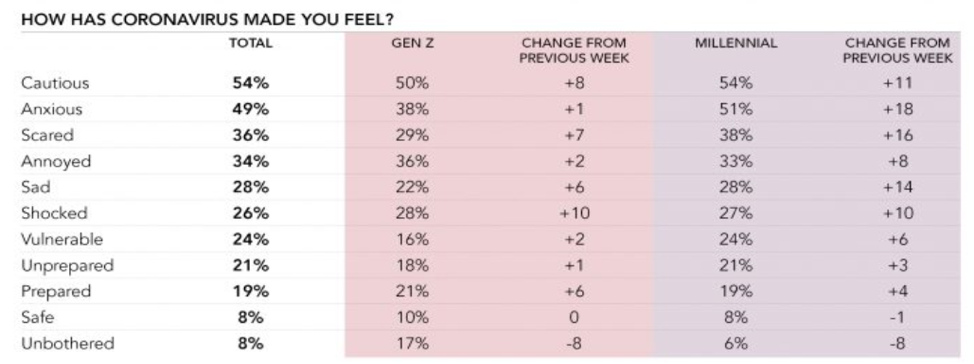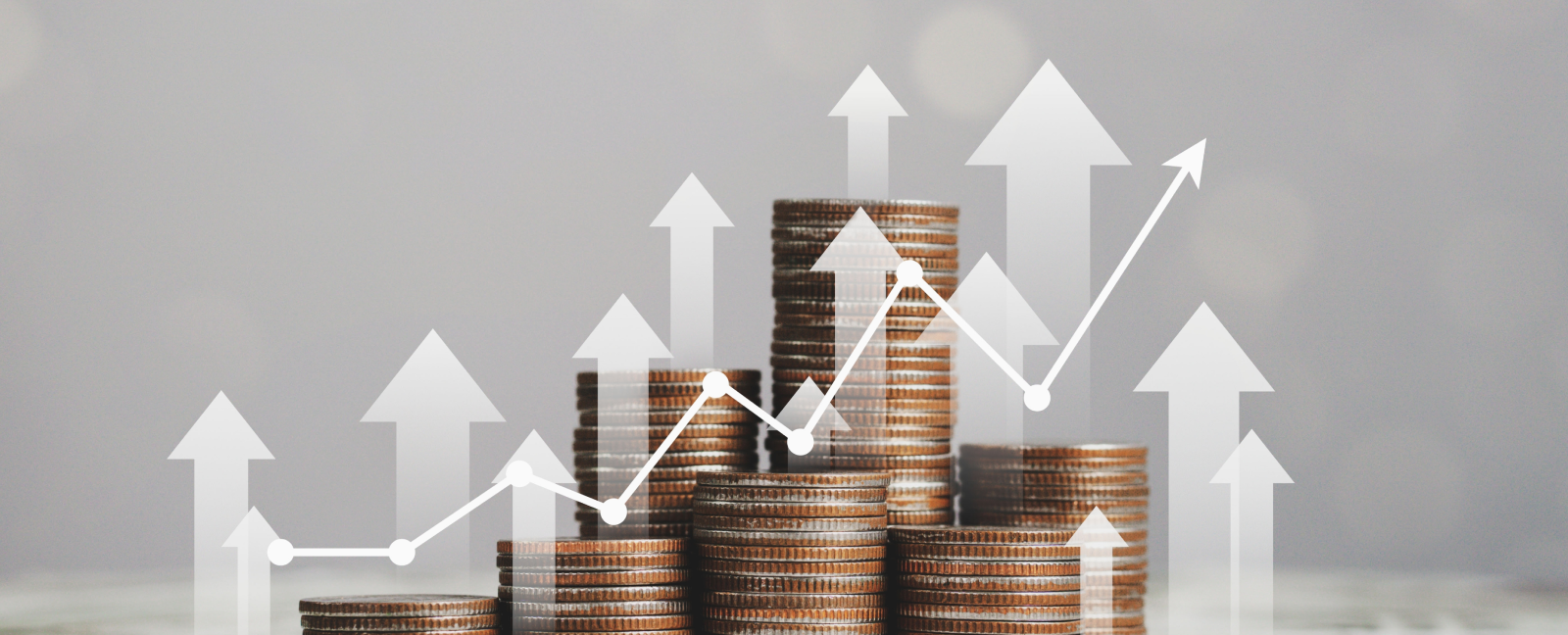
The Impact of COVID-19 on Consumer Behaviors and Sentiments
Every generation will react differently [to COVID-19] based on the experiences that generation has had, (Source: Paul Gionfriddo, president and CEO of the nonprofit Mental Health America)
The COVID-19 crisis is unexpected and unprecedented. Early this year, most companies were set to start implementing their 2020 plans when they were confronted with an entirely new situation. Marketers are now in the midst of a generation-defining event that will influence how consumers behave for years to come. Marketers will have to be fast and pragmatic to manage the crisis, while also being strategic on how to weather the downturn. While some researchers argue that studying other pandemics might not be helpful, I believe it would be worthwhile to examine how the 2008 recession radically changed consumer behavior. After the crisis, social scientists spotted new drivers for consumer activity. They can be summarized as follows (source: The International Journal of Economic Practices and Theories; 2011):
- The post-recession brought about a new sense of frugality, characterized by a strong awareness of the value that dictates price, brand, and comfort.
- Consumers are more likely to justify buying products at a higher price.
- Brand loyalty became less of a driving factor for purchases.
While it is still early to determine to what extent and how the post-COVID-19 era is going to unfold, some facts that can help marketers determine what actions they can take and how to start preparing for a post-COVID 19 world have started to emerge. A recent McKinsey research reveals some consumer sentiments and behaviors that marketers can currently build on.

Looking more closely at the results, we can conclude that uncertainty and pessimism are the overwhelming consumer sentiments. Such sentiments created a paradigm shift in consumer behavior. Here are some updates:
- Increased online shopping. Both officials and medical experts are encouraging people to take action to reduce the risks of getting infected by the COVID-19 virus. Precautions such as social distancing, staying at home, and following specific hygienic guidelines are becoming daily imperatives. These measures resulted in a hype in online shopping. In the UAE for instance, giant FMCG retailers such as Carrefour and Choithrams started online shopping and home delivery services. According to a new survey of 1,000 consumers from marketing technology and consumer engagement firm Valassis, half of respondents have reported changing their online shopping behavior during the COVID-19 pandemic. This figure includes 42% who are shopping online more and 8% who are shopping online less. Such shifts in consumer behaviors and sentiments are pushing sellers to adjust their services to meet the new challenges. As Nate Smith, group manager of product marketing for Adobe Analytics said: Right now, as consumers increasingly use digital methods to prepare for a possible emergency, retailers need to ensure smooth, frictionless, and fast experiences on their eCommerce websites and mobile applications. Meeting your customers needs and expectations at a time like this is imperative: it could either make or break your brand.
- Spending patterns are shifting towards must-have-now items. Unnecessary purchases are postponed giving way to other product categories. Grocery, household products, and home entertainment were the first categories to see consistent increases, while travel, out-of-home entertainment, food service, and even discretionary categories like apparel have cratered (McKinsey).
- Different shopping behaviors between men and women. Survey data indicates that men are more likely to have the pandemic impact their shopping behaviors. One-third of men, compared to 25% of women, reported the pandemic affecting how much they spend on products. Men were also found to be shopping online and avoiding in-store experiences more than women (Source: bigcommerce.com).
- Generational purchasing responses to COVID-19 have been observed. Different generations respond differently to this crisis (Sources: bigcommerce.com; CNBC)
- Millennials versus Gen Z. One survey of U.S and U.K consumers found that the younger generation (Gen Z born between 1996 and 2010-) are not as concerned about the pandemic as millennials are, which is reflected in their relatively normal purchasing behavior. Millennials on the other hand, being more concerned, are cutting back on spending, stocking up on items, and spending less on experiences. YPulses (Research company, New York, USA) exclusive data on how COVID-19 has impacted Gen Z & Millennials.

- Boomers versus Gen X. Between the boomers and generation x, the older generation is less concerned about Covid-19 than the younger one (though the worries are there) and they are not letting the pandemic impact their shopping habits as much. One theory is that Baby boomers (those born between 1946 and 1964) and older, have lived through a greater set of experiences, and their attention and worries are likely to turn towards children and grandchildren rather than themselves. But while Gen X also experienced tumultuous times, as they were in the workforce during the 2008 stock market crash and other crisis (9/11, real estate crash, etc.), they feel more responsible for running households, taking care of children and caring for elderly parents and are shouldering the brunt of stress.
This article described some consumer sentiments and behaviors during the COVID-19 crisis. In the next article, we will illustrate how marketing leaders can manage the crisis and plan for the future.
In the economic recovery from the pandemic, marketing—the link between businesses and their customers—will play a pivotal role. Planning starts now. Source: Julien Boudet, Jonathan Gordon, Brian Gregg, Jesko Perrey, and Kelsey Robinson (McKinsey)
Related Articles

Navigating Consumer Trends in the Modern Marketplace: How Businesses Can Stay Ahead
In today's fast-evolving market, consumer trends aren't just insights;…

The Impact of AI on the Corporate Training Industry
Having been at the forefront of corporate training for two decades, I…

The Butterfly Effect: From Marginal to Systemic
UBS acquires Credit Suisse after a $69 billion one-quarter deposit outflow,…

The Top Brand Positioning Models Every Marketer Should Know
Brand positioning is the process of developing a strategy to establish…
